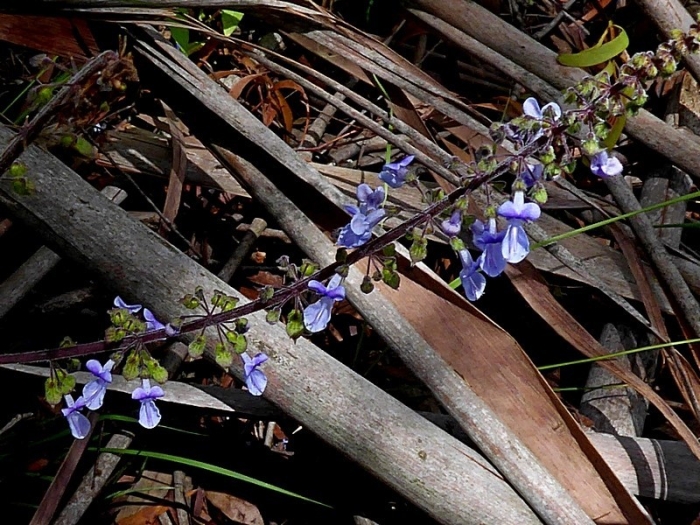Little Spurflower
(Plectranthus parviflorus)
Little Spurflower (Plectranthus parviflorus)
/
/

Max Campbell
CC BY 4.0
Image By:
Max Campbell
Recorded By:
Copyright:
CC BY 4.0
Copyright Notice:
Photo by: Max Campbell | License Type: CC BY 4.0 | License URL: http://creativecommons.org/licenses/by/4.0/ | Rights Holder: Max Campbell | Publisher: iNaturalist | Date Created: 2018-12-16T11:25Z |

















Estimated Native Range
Summary
Plectranthus parviflorus, commonly known as little spurflower or cockspur flower, is a perennial herb that is native to Australia, particularly to the understory of eucalyptus forests, rainforests, and coastal scrublands. It typically grows between 4-28 inches (10-70 cm) in height and thrives in shady, moist areas. This plant is characterized by its sprawling habit and its leaves, which are green, ovate, and sometimes with a hint of purple. The little spurflower produces attractive blue and white flowers that are small but showy, blooming throughout the year, with a peak in the warmer months.
Little spurflower is valued for its ease of maintenance and its ability to fill in shady spots in the garden. It is often used as a ground cover or in border plantings, and its continuous flowering provides extended visual interest. In cultivation, it prefers well-drained soils, moderate water, and part shade to full shade conditions. While it is not known for any significant diseases, it can occasionally suffer from root rot if overwatered or planted in poorly draining soils. It is not typically invasive but can spread readily in suitable conditions.CC BY-SA 4.0
Little spurflower is valued for its ease of maintenance and its ability to fill in shady spots in the garden. It is often used as a ground cover or in border plantings, and its continuous flowering provides extended visual interest. In cultivation, it prefers well-drained soils, moderate water, and part shade to full shade conditions. While it is not known for any significant diseases, it can occasionally suffer from root rot if overwatered or planted in poorly draining soils. It is not typically invasive but can spread readily in suitable conditions.CC BY-SA 4.0
Plant Description
- Plant Type: Herb
- Height: 2-3 feet
- Width: 2-4 feet
- Growth Rate: Moderate
- Flower Color: Purple, White
- Flowering Season: Fall
- Leaf Retention: Evergreen
Growth Requirements
- Sun: Part Shade, Full Shade
- Water: Low, Medium
- Drainage: Medium
Common Uses
Border Plant, Deer Resistant, Groundcover, Low Maintenance, Potted Plant, Street Planting
Natural Habitat
Native to the understory of eucalyptus forests, rainforests, and coastal scrublands in Australia
Other Names
Common Names: Small Spurflower
Scientific Names: , Plectranthus parviflorus,
GBIF Accepted Name: